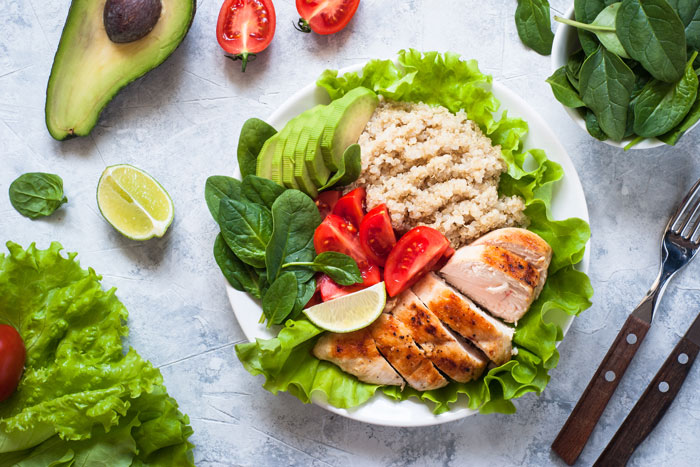
Why does it seem like there’s a new diet every year that people are either on or talking about? Well, this year is no exception with the keto diet and Whole30 as both eating programs have gained quite a following for its ability to help you discover how your body reacts to different foods while losing weight in the process.
So how do you know which eating program is right for you? As always, do your research and learn the “rules” for each diet, check out blogs to hear about others’ experiences, find recipes you can try, etc. Below, we break down the basics you need to know before committing to one of these diets.
The keto diet
What is it?
The keto diet is a restrictive diet that’s based on cutting carbs to put your body into the state of ketosis. The ketosis state produces ketones in the liver, which can help with energy and weight loss.
What can you eat?
Foods like grains, sugars, fruit, and starchy veggies are out. Instead, your diet will consist of above ground veggies, berries, high-fat dairy, meat, and seeds.
What are the side effects?
Some keto dieters experience the “keto flu,” which is caused by sugar withdrawals. You may also experience headaches, fogginess, and fatigue.
Who should try keto?
If your primary goal is to lose weight quickly, this diet can help. However, when you go back to eating carbs and other foods that don’t follow the keto diet, it’s likely that you’ll gain back the weight you lost. This diet is most likely going to help you meet short-term goals over long-term ones.
Whole30
What is it?
Whole30 is an elimination diet that relies on a dieter eating only compliant foods (no cheating!) for 30 days. While you may lose weight on the diet, the diet’s main focus is to help you eat cleaner, get to know what’s in the foods you’re eating, and understand which foods serve your body best.
What can you eat?
Whole30-ers will need to avoid legumes, grain, dairy, sugar, and alcohol for 30 days. You can, however, eat pretty much an unlimited amount of compliant foods including meat, veggies, fruit, nuts, healthy fats and oils, and potatoes. After 30 days, you’ll slowly incorporate non-compliant foods back into your diet and see how it affects your energy levels, body, and overall well-being.
What are the side effects?
While this diet may help you feel better, like most diets, it’s hard to stick to it long-term. There’s also a bit of planning and meal prep that goes into a successful completion of Whole30. Dieters may also experience breakouts, moodiness, and fatigue while on Whole30.
Who should try Whole30?
If you think you have a food sensitivity or just want to focus on clean eating habits, this diet is for you. It can help you identify foods that don’t agree with your system and will help you learn exactly what’s in the foods you’re eating.
Have you ever tried the keto diet or Whole30? Tell us about your experience below!
xx, The FabFitFun Team




